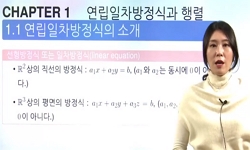As trade in goods and assets increases globally, trade and financial integration deepens, leading to more interdependence across countries. This study investigates the impact of trade and financial integration on business cycle synchronization. While ...
http://chineseinput.net/에서 pinyin(병음)방식으로 중국어를 변환할 수 있습니다.
변환된 중국어를 복사하여 사용하시면 됩니다.
- 中文 을 입력하시려면 zhongwen을 입력하시고 space를누르시면됩니다.
- 北京 을 입력하시려면 beijing을 입력하시고 space를 누르시면 됩니다.

무역 및 금융연계성이 경기변동 동조성에 미치는 영향: 패널 연립방정식 접근 = The Impact of Trade and Financial Integration on Business Cycle Synchronization: A Panel Simultaneous Equation Approach
한글로보기https://www.riss.kr/link?id=A60248648
- 저자
- 발행기관
- 학술지명
- 권호사항
-
발행연도
2012
-
작성언어
-
- 주제어
-
KDC
300
-
등재정보
KCI등재
-
자료형태
학술저널
- 발행기관 URL
-
수록면
155-190(36쪽)
-
KCI 피인용횟수
3
- 제공처
- 소장기관
-
0
상세조회 -
0
다운로드
부가정보
다국어 초록 (Multilingual Abstract)
As trade in goods and assets increases globally, trade and financial integration deepens, leading to more interdependence across countries. This study investigates the impact of trade and financial integration on business cycle synchronization. While East Asian countries have made much progress in trade integration among themselves, financial markets of individual East Asian countries have created closer linkages to the financial centers such as the U.S. and the U.K. The results in this paper can be applied to predict how the business cycles of Asian countries will shape in the future as this pattern of trade and financial integration continues. I adopt four estimation strategies: (i) independent equations with pooled cross-section data (ii) simultaneous equations with pooled cross-section data, (iii) panel independent equations, and (IV) panel simultaneous equations. In most previous studies, method (i) has been used to study independently the impact of trade or financial integration on business cycle synchronization. In contrast, Imbs (2004, 2007), by utilizing the simultaneity nature, examined both direct and indirect channels through which trade and financial integration impacts on the business cycle synchronization. While Imbs`` approach, i.e. method (ii), was more advanced than most other previous studies, it suffers from the fact that it did not control unobserved country specific effects. This study resolves the problem of Imbs`` approach by constructing panel data that enables to control country fixed effects. I report two panel regression results, based on independent equations (method (iii)) and simultaneous equations (method (IV)). Irrespective of estimation methods, my results suggest that trade integration strengthens business cycle synchronization. In contrast, the impact of financial integration on business cycle synchronization is not unambiguous: depending on the estimation methods, the impact is either positive or negative. However, if we restrict attention to the most desirable method (iv), there is no single case where the impact is positive and statistically significant. In most cases, the estimated impact of financial integration on business cycle synchronization is negative and statistically significant. The above results are consistent with the recent findings of Rose (2011) that the more countries are integrated financially with the global financial centers, the lower the negative impact of the global financial crisis on those countries. Hence it is likely that the negative business cycle impact of the global financial crisis on Asian countries is lower despite the fact that their financial integration with the financial centers is quite high, When I also examine the recent changes in business cycle synchronization between Korea and other Asian countries, it is strengthened with countries that trade more goods with Korea, while it is weakened with countries that trade less assets with Korea, confirming our results.
참고문헌 (Reference)
1 World Bank, "Will Resilience Overcome Risk?"
2 Imbs, Jean, "Trade, Finance, Specialization and Synchronization" 86 (86): 723-734, 2004
3 Calderon, Cesar, "Trade intensity and business cycle synchronization : Are developing countries any different?" 71 (71): 2-21, 2007
4 Shin, K. H., "Trade Integration and Business Cycle Synchronization in East Asia" 2 (2): 1-20, 2003
5 신관호, "The impact of trade integration on business cycle co-movements in Europe" 141 (141): 104-123, 200502
6 Imbs, Jean, "The Real Effects of Financial Integration" 68 (68): 296-324, 2007
7 Rose, Andrew, "The Olympic Effect" 121 : 652-677, 2011
8 Bergstrand, Jeffrey H., "The Heckscher-Ohlin-Samuelson Model, the Linder Hypothesis and the Determinants of Bilateral Intra-industry Trade" 100 : 1216-1229, 1990
9 Frankel, Jeffrey, "The Endogeneity of the Optimum Currency Area Criteria" 108 : 1009-1025, 1998
10 World Bank, "Testing Time Ahead"
1 World Bank, "Will Resilience Overcome Risk?"
2 Imbs, Jean, "Trade, Finance, Specialization and Synchronization" 86 (86): 723-734, 2004
3 Calderon, Cesar, "Trade intensity and business cycle synchronization : Are developing countries any different?" 71 (71): 2-21, 2007
4 Shin, K. H., "Trade Integration and Business Cycle Synchronization in East Asia" 2 (2): 1-20, 2003
5 신관호, "The impact of trade integration on business cycle co-movements in Europe" 141 (141): 104-123, 200502
6 Imbs, Jean, "The Real Effects of Financial Integration" 68 (68): 296-324, 2007
7 Rose, Andrew, "The Olympic Effect" 121 : 652-677, 2011
8 Bergstrand, Jeffrey H., "The Heckscher-Ohlin-Samuelson Model, the Linder Hypothesis and the Determinants of Bilateral Intra-industry Trade" 100 : 1216-1229, 1990
9 Frankel, Jeffrey, "The Endogeneity of the Optimum Currency Area Criteria" 108 : 1009-1025, 1998
10 World Bank, "Testing Time Ahead"
11 Eaton, Jonathan, "Technology and Bilateral Trade" Boston Univ 1997
12 Eichengreen, Barry, "Should the Maastricht Treaty Be Saved?" International Finance Section, Princeton University 1992
13 Tinbergen, Jan, "Shaping the World Economy : Suggestions for an International Economic Policy" The Twenties Century Fund 1962
14 Kim, S. Y., "Regional and Global Financial Integration in East Asia, In China, Asia and the New World Economy" Oxford University Press 2008
15 신관호, "People's Republic of China as an Engine of Growth for Developing Asia?" MIT Press 10 (10): 120-163, 201106
16 Evenett, Simon J., "On Theories Explaining the Success of the Gravity Equation" 110 (110): 281-316, 2002
17 Helpman, Elhanan, "Market Structure and Foreign Trade : Increasing Returns, Imperfect Competition, and the International Economy" MIT Press 1985
18 Krugman, Paul, "Lessons of Massachusetts for EMU, In The Transition to Economic and Monetary Union in Europe" Cambridge University Press 241-261, 1993
19 French, Kenneth, "Investor Diversification and International Equity Markets" 81 (81): 222-226, 1991
20 Cashin, Paul, "International Integration of Equity Markets and Contagion Effects" IMF 1995
21 Rose, Andrew, "International Financial Integration and Crisis Intensity" ADBI 2011
22 Tesar, Linda, "Home Bias and High Turnover" 14 (14): 467-492, 1995
23 Kalemli-Ozcan, Sebnem, "Financial Regulation, Financial Globalization and the Synchronization of Economic Activity" 2012
24 Mendoza, Enrique, "Financial Globalization, Financial Crises and Contagion" 56 (56): 78-111, 2010
25 Markusen, James R., "Explaining the Volume of North-South Trade" 100 : 1206-1215, 1990
26 Kalemli-Ozcan, Sebnem, "Economic Integration, Industrial Specialization, and the Asymmetry of Macroeconomic Fluctuations" 33 (33): 107-137, 2001
27 신관호, "Economic Integration and Changes in the Business Cycle in East Asia: Is the Region Decoupling from the Rest of the World?" 8 (8): 107-140, 200904
28 Deardorff, Alan V., "Determinants of Bilateral Trade : Does Gravity Work in a Neoclassical World?, In The Regionalization of the World Economy" University of Chicago Press 1998
29 Claessens, Stijn, "Contagion : Why Crises Spread and How it Can Be Stopped, In International Financial Contagion" Kluwer Academic Publishers 2001
30 Kwanho Shin, "Complementarities between Bilateral Trade and Financial Integration" 한국경제연구학회 13 (13): 39-68, 2012
31 Imbs, Jean, "Co-Fluctuations" CEPR 2003
32 Calvo, Sarah, "Capital Flows to Latin America : Is There Evidence of Contagion Effects?, In Private Capital Flows to Emerging Markets After the Mexican Crisis" Institute for International Economics 1996
33 Geraci, Vincent J., "Bilateral Trade Flows and Transport Costs" 59 (59): 67-74, 1977
34 Anderson, James E., "A Theoretical Foundation for the Gravity Equation" 69 (69): 106-116, 1979
35 Poyhonen, Pentti, "A Tentative Model for the Volume of Trade between Countries" 90 (90): 93-100, 1963
36 Chinn, Menzie, "A New Measure of Financial Openness" 10 (10): 309-322, 2008
동일학술지(권/호) 다른 논문
-
Hedge Performance of Oil Futures Contracts Using Mixed Normal Dynamic Conditional Correlation Models
- 한국금융연구원
- ( Jong Ha Weon )
- 2012
- KCI등재
-
Five Effective Ways to Resolve Omnipresent Financial Disputes
- 한국금융연구원
- ( Jin Yoo )
- 2012
- KCI등재
-
Time Preference and Saving Rate: Implications for Global Imbalances
- 한국금융연구원
- ( Dae Hwan Kim )
- 2012
- KCI등재
-
- 한국금융연구원
- 박정민 ( Jeong Min Park )
- 2012
- KCI등재
분석정보
인용정보 인용지수 설명보기
학술지 이력
| 연월일 | 이력구분 | 이력상세 | 등재구분 |
|---|---|---|---|
| 2026 | 평가예정 | 재인증평가 신청대상 (재인증) | |
| 2020-01-01 | 평가 | 등재학술지 유지 (재인증) |  |
| 2017-01-01 | 평가 | 등재학술지 유지 (계속평가) |  |
| 2013-01-01 | 평가 | 등재학술지 유지 (등재유지) |  |
| 2010-01-01 | 평가 | 등재학술지 유지 (등재유지) |  |
| 2009-01-01 | 평가 | 학술지 통합 (기타) | |
| 2008-03-28 | 학술지명변경 | 한글명 : 금융학회지 -> 금융연구외국어명 : Korean Journal of Money & Finance -> Journal of Money & Finance |  |
| 2008-01-01 | 평가 | 등재학술지 유지 (등재유지) |  |
| 2005-01-01 | 평가 | 등재학술지 선정 (등재후보2차) |  |
| 2004-01-01 | 평가 | 등재후보 1차 PASS (등재후보1차) |  |
| 2003-01-01 | 평가 | 등재후보학술지 선정 (신규평가) |  |
학술지 인용정보
| 기준연도 | WOS-KCI 통합IF(2년) | KCIF(2년) | KCIF(3년) |
|---|---|---|---|
| 2016 | 0.57 | 0.57 | 0.64 |
| KCIF(4년) | KCIF(5년) | 중심성지수(3년) | 즉시성지수 |
| 0.61 | 0.62 | 1.431 | 0.06 |




 KCI
KCI KISS
KISS






